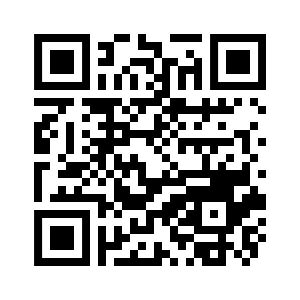Submissions
Author Guidelines
Submission of an article implies that the work described has not been published previously (except in the form of an abstract or as part of a published lecture or academic thesis), that it is not under consideration for publication elsewhere, that its publication is approved by all authors and tacitly or explicitly by the authorities responsible where the work was carried out. However, we accept submissions that have previously appeared on preprint servers (for example: arXiv, bioRxiv, Nature Precedings, Philica, Social Science Research Network, and Vixra); have previously been presented at conferences; or have previously appeared in other “non-journal” venues (for example: blogs or posters). Authors are responsible for updating the archived preprint with the journal reference (including DOI) and a link to the published articles on the appropriate journal website upon publication.
Copyrights for articles are retained by the authors, with first publication rights granted to the journal. Authors have rights to reuse, republish, archive, and distribute their own articles after publication. The journal/publisher is not responsible for subsequent uses of the work. Authors shall permit the publisher to apply a DOI to their articles and to archive them in databases and indexes such as EBSCO, DOAJ, and ProQuest.
The publisher and journals have a zero-tolerance plagiarism policy. We check the issue using two methods: a plagiarism prevention tool (iThenticate) and a reviewer check. All submissions will be checked by iThenticate before being sent to reviewers.
Manuscripts should be prepared in Microsoft Word and submitted online. The editors reserve the right to edit or otherwise alter all contributions, but authors will receive proofs for approval before publication. If you have any questions, please contact the editor of the journal.
Paper Selection Process
- On receiving the paper, the system will send an acknowledgement to the corresponding author immediately.
- The process of peer review may take 2-3 weeks. You will be able to trace the process in your user account.
- We will send an acceptance E-mail to the corresponding author, indicating acceptance or not, as well as the date of publication. The authors should decide whether or not to accept our arrangements for publishing.
- Authors need to re-edit the paper, using the template. The re-edited paper should use the template provided by us and meet the formatting requirements outlined in the Author Guidelines.
- Once you submit the re-edited paper, the system will send you a confirmation E-mail.
- After publishing, the authors may download the e-journal from the website.
General Requirements
Language
Please write your text in good Indonesian. Use decimal points (not commas); use a space for thousands (10 000 and above).
Length of paper
Length of 3000-8000 words is preferred.
Page setup
Page size: A4
Margins: top-2.54 cm, bottom-2.54 cm, left-2.54 cm, and right-2.54 cm
Pages should be numbered.
We strongly suggest you use the template for preparation of your paper.
Title Page
The title page should be a separate page before the main body. Provide the following information on the title page (in the order given). It should include:
Title
Times New Roman; Size-20; Line Spacing: Double; Paragraph Spacing: Before paragraph-1 line; After paragraph-1 line; Center
The title should be concise and informative. Titles are often used in information-retrieval systems. Avoid abbreviations and formulae where possible, and do not exceed 15 words.
Author names and affiliations
Please indicate the given name and family name clearly. The given name should be in front of the family name. Present the authors' affiliation (where the actual work was done) below the names. Provide the full postal address of each affiliation, including the country name. Then, list the e-mail address, and, if available, the telephone and fax number of each author.
Corresponding Author
Clearly indicate who is willing to handle correspondence at all stages of refereeing and publication, also post-publication. Please add the words “corresponding author” into parentheses after his/her name.
General Rules for Text
Please use the following rules for whole text (except for the title), including abstract, keywords, headings, tables, references, acknowledgement, glossary and appendixes.
Front: Times New Roman; Size: 12
Paragraph Spacing: Before paragraph – 5 line; After paragraph – 0 line
Line Spacing: Single
Abstract
A concise and factual abstract is required (maximum length 300 words). The abstract should state briefly the purpose of the research, the principal results and major conclusions. An abstract is often presented separate from the article, so it must be able to stand alone. References should therefore be avoided but, if essential, they must be cited in full, without reference to the reference list.
Keywords
Immediately after the abstract, provide a maximum of 5 keywords, avoiding general and plural terms and multiple concepts (avoid, for example, 'and', 'of'). Be sparing with abbreviations: only abbreviations firmly established in the field may be eligible.
Main Body of Manuscripts
Subdivision of the article
Divide your article into clearly defined and numbered sections. Subsections should be numbered 1., 2., (then 1.1, 1.1.1, 1.1.2; 1.2, etc.) (the abstract, acknowledgement, references, glossary and appendix are excluded from the section numbering). Use this numbering also for internal cross-referencing: do not just refer to 'the text.' Authors are urged to write as concisely as possible, but not at the expense of clarity.
Title of subdivision
Heading Level-1: Times New Roman; Size-12; Bold; for example, 1. Introduction
Heading Level-2: Times New Roman; Size-12; Italic; for example, 1.1 Research Methods
Heading Level-3: Times New Roman; Size-12; Normal; for example, 1.1.1 Analysis of Results
Tables
Number tables consecutively in accordance with their appearance in the text. Place descriptions of tables below the table body. Avoid vertical rules. Be sparing in the use of tables and ensure that the data presented in tables does not duplicate results described elsewhere in the article.
Tables should be:
Integrated into the submitted document.
Captioned above the table.
Should NOT be submitted as an image, but as MS Word-Table.
Subtitled with all units of measurement (metric units).
Borders setting: all; width: 1/2 pt.
Cited in the text as e.g. Table 1.
Figures, Photos, Illustrations
Figures, photos, illustrations and so forth should be:
Of reproducible quality and attached in TIF format or in JPG format. They should have a minimum resolution of 300 dpi.
Integrated as well into the submitted document at the appropriate place.
Accompanied by a clear legend or key, if necessary.
Presented with metric units.
Captioned below the figures.
Cited in the text as e.g. Figure 1.
Formulae
The text size of formulae should be with the same as normal text size.
Acknowledgement and Sponsoring information
Put the acknowledgement or sponsoring information after the main body and before the references.
References
Responsibility for the accuracy of bibliographic citations lies entirely with the authors. We use the APA style citation system (American Psychological Association). You are referred to the “Publication Manual of the American Psychological Association”, and you may find relevant details at: www.apa.org
Details concerning the APA-style citation system can also be found at http://linguistics.byu.edu/faculty/henrichsenl/apa/apa01.html
Citations in the text
Please ensure that every reference cited in the text is also present in the reference list (and vice versa). Avoid citation in the abstract. Unpublished results and personal communications should not be in the reference list, but may be mentioned in the text. Citation of a reference as 'in press' implies that the item has been accepted for publication.
Citing and listing of web references
As a minimum, the full URL should be given. Any further information if known (author names, dates, reference to a source publication, etc.) should also be given. Web references can be listed separately (e.g., after the reference list) under a different heading if desired, or they can be included in the reference list.
Text
Citations in the text should follow the referencing style used by the American Psychological Association (APA).
List
References should be arranged first alphabetically and then further sorted chronologically if necessary. More than one reference from the same author(s) in the same year must be identified by the letters "a", "b", "c", etc., placed after the year of publication.
DOIs in References
The journal/publisher encourages authors to cite those items (journal articles, conference proceedings, book chapters, technical reports, working papers, dissertations, etc.) that have DOIs. When the cited items have DOIs, the authors should add DOI persistent links to the regular references. The DOI persistent links should be the last elements in the references. The persistent links should be active.
Format of persistent link: http://dx.doi.org/+DOI (without “doi:”)
Example of persistent link: http://dx.doi.org/10.1109/2.901164
The authors or editors may retrieve articles’ DOIs at: http://www.crossref.org/SimpleTextQuery/
You can open a free account, to start retrieving articles’ DOIs. CrossRef allows you check multiple references. Please read this webpage very carefully. Only articles with assigned DOIs can be retrieved through the above mentioned webpage.
Examples:
Reference to a journal publication:
Kornack, D. Rakic, P. (2001). Cell Proliferation Without Neurogenesis in Adult Primate Neocortex. Science. 294 (5549). 2127-2130. http://dx.doi.org/10.1126/science.1065467
Reference to a book:
Strunk, W., Jr., & White, E. B. (1979). The elements of style. (3rd ed.). New York: Macmillan. p. 12.
Reference to a chapter in an edited book:
Mettam, G. R., & Adams, L. B. (1994). How to prepare an electronic version of your article. In B. S. Jones, & R. Z. Smith (Eds.), Introduction to the electronic age (pp. 281-304). New York: E-Publishing Inc.
Reference to a web source:
Smith, Joe, (1999). One of Volvo's core values. [Online] Available: http://www.volvo.com/environment/index.htm (July 7, 1999).\
Glossary
Technical language should be accompanied by a comprehensive glossary of terms used. Entries in the glossary should be presented in alphabetical order.
The glossary list should follow the Reference List.
Appendix
Please be sparing in the use of appendices unless they are absolutely necessary, The appendixes should be numbered as, e.g. Appendix 1, Appendix 2, etc.
Privacy Statement
The names and E-mail addresses entered in this journal’s site will be used exclusively for the purposes of this journal and will not be made available for any other purpose or to any other party.
Submission Preparation Checklist
All submissions must meet the following requirements.
- The submission has not been previously published, nor is it before another journal for consideration (or an explanation has been provided in Comments to the Editor).
- The submission file is in OpenOffice, Microsoft Word, or RTF document file format.
- Where available, URLs for the references have been provided.
- The text is single-spaced; uses a 12-point font; employs italics, rather than underlining (except with URL addresses); and all illustrations, figures, and tables are placed within the text at the appropriate points, rather than at the end.
- The text adheres to the stylistic and bibliographic requirements outlined in the Author Guidelines.
Copyright Notice
MBIA Universitas Bina Darma Jalan Jend. A. Yani 13 Ulu Palembang 
MBIA by http://journal.binadarma.ac.id/index.php/mbia is licensed under a Creative Commons Attribution-ShareAlike 4.0 International License.
Privacy Statement
The names and email addresses entered in this journal site will be used exclusively for the stated purposes of this journal and will not be made available for any other purpose or to any other party.










